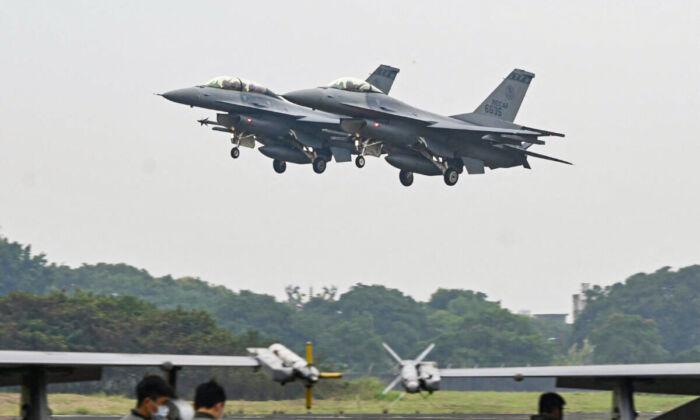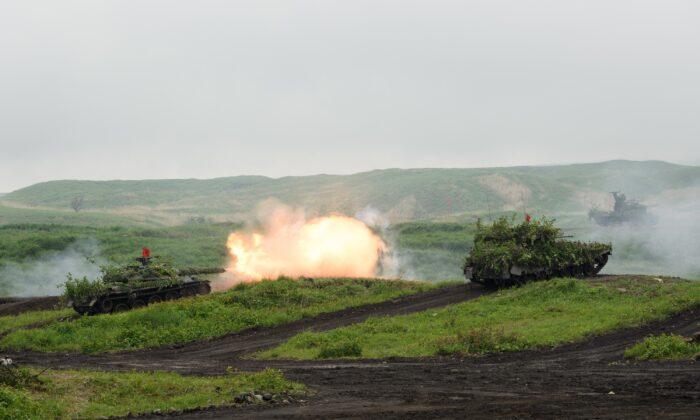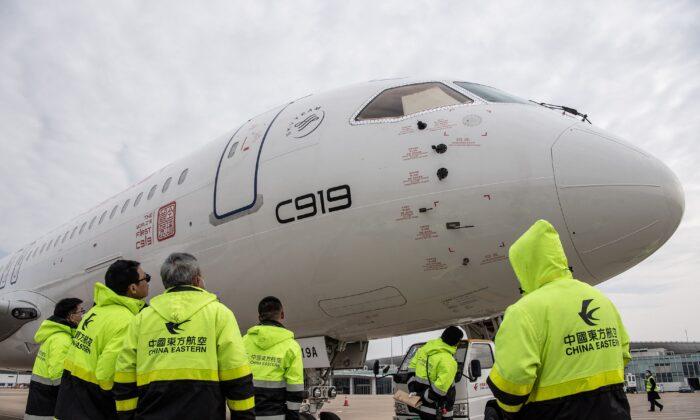The existential threat to Taiwan is self-apparent, or at least it should be to anyone who has watched how, in recent weeks, China has bracketed the island with missile tests, military exercises, and increasingly hostile incursions by the PLA Air Force. Equally self-evident is Taiwan’s need to beef up its defenses.
Besides the usual requirements for better kinetic weapons—items like modern fighter jets, longer-range missiles, submarines, and the like—Taipei needs to find new force multipliers, capabilities that will increase Taiwan’s chances of defending itself and deter a possible invasion.
Increasingly, these capabilities are things like artificial intelligence (AI), machine learning, quantum computing, automation and robotics, and the “internet of things.” These technologies will help Taiwan react faster, with vastly improved “battlespace knowledge” and with greater accuracy and lethality.
These technologies are embedded in what we call the “fourth industrial revolution,” or 4IR. The 4IR promises to create a new set of opportunities and challenges regarding how a country like Taiwan can leverage such technologies for military modernization.
More than most countries, Taiwan has an inherent ability to piggyback on huge, 4IR-related leaps in its commercial sector. The island is home to one of the world’s strongest and most comprehensive information technologies (IT) ecosystems, especially in semiconductor manufacturing and integrated circuitry design. It also possesses a high-quality workforce, particularly a large pool of skillful but inexpensive engineering talent.
At the same time, the supply of domestic talent is still deemed insufficient to meet rising demand, especially regarding such 4IR technologies as AI.
Consequently, Taiwan has implemented several technonationalist development programs centering on 4IR technologies. One of these is the “Asia Silicon Valley” Development Plan, intended to connect Taiwan with high-tech R&D communities worldwide and seize opportunities in next-generation industries.

In conjunction, Taiwan wants to retain and strengthen its considerable lead when it comes to the hardware side of its IT sector. Taiwan is a global heavyweight in the semiconductor industry, ranked first in global wafer production and chip packaging and testing, and second in silicon wafer output.
In particular, Taiwan specializes in “pure play” semiconductor foundries that manufacture chips according to spec, such as the Taiwan Semiconductor Manufacturing Company (TSMC). TSMC is the world’s largest chip foundry, with four GigaFabs in Taiwan, and it can manufacture chips with a process node as small as 5 nanometers.
Under Taipei’s “Advancing Forward-Looking Semiconductor Talent and R&D” plan, Taipei plans to consolidate Taiwan’s international strategic position and to further expand upon its existing advantages in the IT market.
In particular, Taiwan plans to increase its competitive advantage in wafer production by progressing toward the goal of being able to produce a semiconductor chip with a process node of one nanometer or less by 2030. The government also wants to strengthen links and interconnections among the island’s science parks in Hsinchu and central and southern Taiwan, ensuring that the national semiconductor industry cluster remains a technology leader.
Most important for future military capabilities is “Taiwan AI Action Plan.” Taiwan’s strengths in the fields of semiconductors, information and communication technologies, and microchip manufacturing are viewed as a superlative foundation upon which to build and advance national expertise in artificial intelligence. As a result, the Taiwan government is pouring considerable resources into developing AI and related technologies as part of Taiwan President Tsai Ing-wen’s push to transform Taiwan’s economy for the new digital age.
Multiple government ministries have introduced sweeping, multi-million-dollar AI-focused schemes, which involve the participation of industry, academia, and both publicly and privately funded research institutions.
The Executive Yuan’s “Taiwan AI Action Plan” was launched in January 2018 with a budget of NT$38 billion (about $1.2 billion). One of the plan’s main goals is to enlarge Taiwan’s existing pool of AI engineering talent. In addition, it also sets out to expand and capitalize on Taiwan’s world-leading position in the semiconductor industry, remold Taiwan into an industrial hub, liberalize regulations to enable the development of innovative technologies, and use AI to transform industry in Taiwan.
One such project is a shared-use AI and Big Data cloud-computing platform, powered by the Taiwania 2 supercomputer at the National Center for High-Performance Computing (NCHC). Launched in May 2019 and later expanded for commercial use, this platform—called the Taiwan Computing Cloud (TWCC)—has been accessed by several start-ups to develop their AI-focused products and solutions.
Taipei has also called on industry—particularly large multinational tech firms—to contribute to national AI development. Global players such as Google, IBM, and Microsoft have already established or expressed their intentions to set up AI R&D centers or programs in Taiwan. These facilities will work closely with government and local universities to train and employ Taiwan’s top-tier engineering talent.

Local government, universities, and research institutions are also active in AI research. The Hsinchu County government, for example, plans to open a 126,000-square-meter AI technology incubator near one of Taiwan’s major all-purpose high-tech zones and two top universities. In particular, Taiwan plans to double the number of IT specialists, particularly expanding into AI.
Overall, Taiwan aims to adopt a 4IR R&D model much like the U.S. Defense Advanced Research Projects Agency (DARPA), focusing on the adoption of research projects and models in support of the development of a national AI infrastructure and to discover fruitful areas for AI development.
There is an explicit national security aspect to Taiwan’s 4IR-related technology innovation plans. Under its “5+2 Innovative Industries Plan,” a “national security” initiative is focused on developing and implementing cybersecurity action plans. As cybersecurity risks have become a major concern for national defense, the demand for cybersecurity products and services will continue to grow. The Taiwanese government has integrated cybersecurity into this strategic industrial development plan as a component of national defense.
The 4IR promises to create a new set of opportunities when it comes to how smaller but high-tech countries like Taiwan can leverage such technologies. At the same time, these efforts are not without their challenges, and it will take time for Taiwan to see militarily useful breakthroughs—the time it may not have. However, piggybacking on huge, 4IR-related leaps in the commercial sector—particularly when it comes to AI—is probably the best chance it has to develop asymmetric responses to Chinese aggression.





